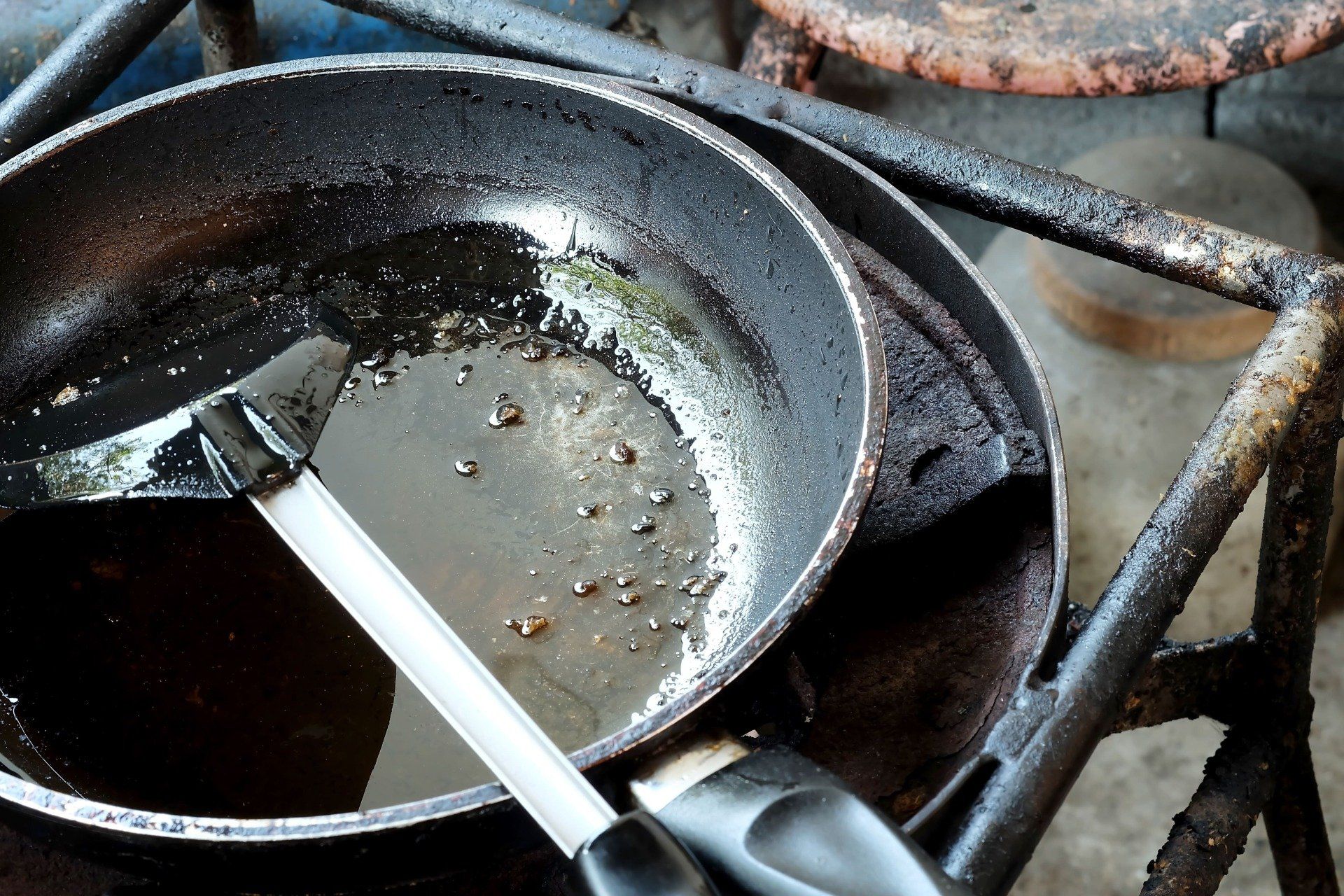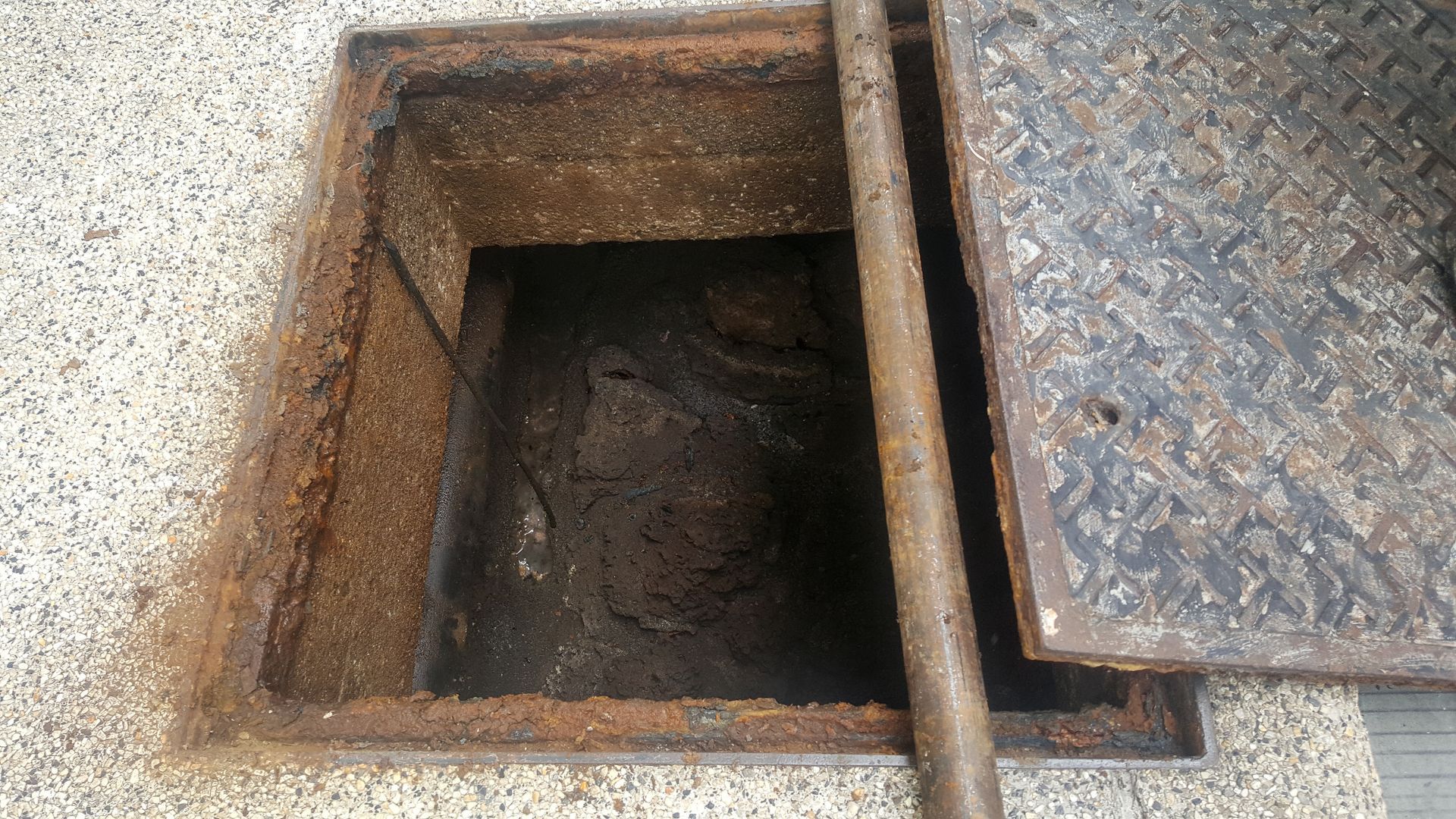How to Avoid Grease Fires

Grease fires are a huge risk for commercial food service businesses for a number of liability and property damage reasons.
Businesses that fail to take preventative measures could potentially be liable for injuries that result from grease fires. Even if their insurance pays for grease fire repairs, they might still lose out on months of income or suffer other business setbacks as a result.
No business owner wants to see their employees get hurt or their investment of time and money go up in flames, which is why it’s worth your time and effort to prevent grease fires.
Preventative Measures for Grease Fires
There are a number of things food service business owners and managers should do to make grease fires unlikely and ensure that if one does occur the damage will be minimized:
- Keep cooktops clean
- Make sure grease spills are cleaned up as soon as possible
- Clean out grease buildup in all the hidden places it can accumulate (and your grease trap)
- Make sure your cooking equipment is up to code
- Ensure your fire suppression systems are UL compliant
- Have all the parts of your sprinklers and fire suppression systems checked
- Keep your staff properly trained on preventing grease fires and how to handle one if it occurs
Why Would a Grease Trap That’s Mostly Water Be a Fire Risk?
While it’s true that your grease trap should primarily contain water, a poorly maintained or clogged grease trap can still contribute to a fire risk. A clogged grease trap that hasn’t been cleaned regularly might back up, resulting in grease pushing out of seams or backing up where it shouldn’t be. Some of the gases that can build up in an improperly vented grease trap might also be highly flammable.
Grease traps can potentially generate methane, hydrogen sulfide, carbon monoxide, carbon dioxide and potentially other gases depending on what’s getting flushed down your business’s sinks and drains. Not only might the gases be flammable, but they might also be toxic.
Making sure your grease trap is working properly and is regularly cleaned can minimize the fire risk and health risk it poses to your staff and customers.
How Common Are Grease Fires?
According to the National Fire Protection Association there are approximately 7,400 food service business fires each year, with about 61 percent of those being caused by cooking equipment. Most restaurant and bar fire injuries, 74 percent, were related to cooking equipment. An estimated 28 percent were attributed to deep fryer fires.
Their report is filled with several specific fires that were fed by grease.
One fire in Pennsylvania started in grease deposits in the bottom of a smoke box and spread to a deep fryer.
In a Utah restaurant fire, grease that had built up in a hood duct caught fire.
One Maryland restaurant entirely burned down because of a fire that started in ductwork over their rotisserie ovens that had been coated in grease residue over the years. The fire spread through the ductwork and the staff couldn’t put it out with fire extinguishers, resulting in a total loss.
In that case and in many others just the heat from ovens was enough to ignite the grease buildup in ductwork.
What’s a Good Fire Suppression System for Grease Fires?
The UL 300 benchmark for restaurant cooking areas set in 1994 is still the standard today. Although they are increasingly rare, some restaurants are still using old fire suppression technology that falls short of UL 300 compliance.
A new benchmark became necessary in the ‘90s due to changes in how many commercial kitchens operated. Namely, the use of vegetable-based cooking oils and the use of energy efficient appliances increased fire risks. The fires that were starting in kitchens burned hotter, were harder to extinguish and posed a high risk for re-ignition.
The Underwriters Laboratories tests were overhauled significantly. Prior to UL 300 they tested fire suppression systems on pans of oil. Those tests weren’t representative of actual kitchen conditions. Post-UL 300 tests:
- Used modern kitchen appliances
- Were run with oils that had auto-ignition temperatures similar to vegetable oil
- Were run with longer pre-burn times
- The appliance fuel sources were kept on during tests
The idea was to more closely imitate the conditions under which an actual kitchen grease fire might break out.
Is Your Grease Trap in Georgia a Fire Hazard?
If you’re worried about kitchen fires in your food service business, getting your grease traps cleaned and serviced by Georgia’s grease trap experts might be a good idea. At Southern Green Industries we’re committed to the safety of every one of our clients.
Let us help ensure your grease trap isn’t contributing to hazardous conditions or causing injuries. Schedule your grease trap cleaning or learn about our oil recycling services by calling (404) 419-6887.
Recent Blog Posts
Contact us Today for a FREE Quote
We are committed to making grease trap cleaning and fryer oil recycling as clean and easy as possible. If you’d like to learn more about our services or get a quote, give us a call at (404) 419-6887.



